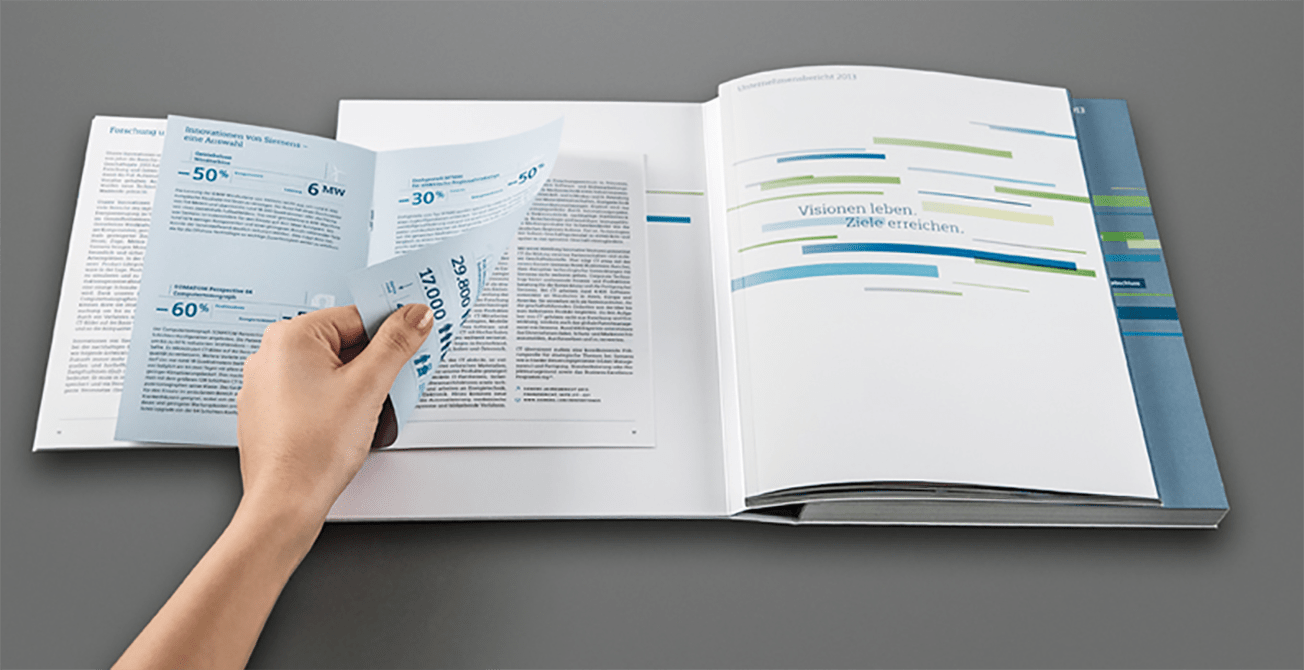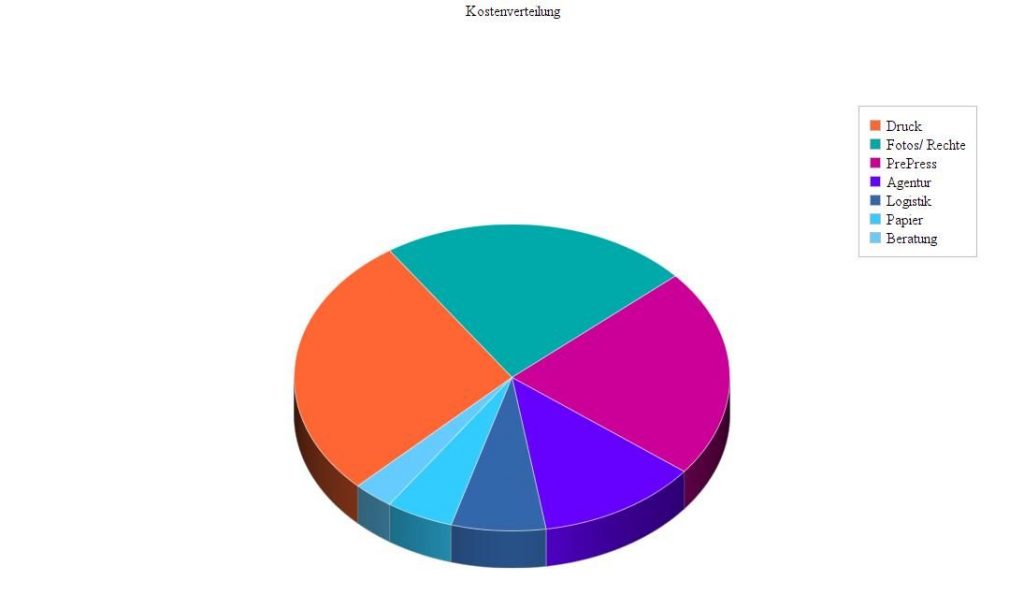The online version offers a wealth of data, cross-media apps, videos, and individual PDFs. The transformation process is in full swing at Audi, as the annual report produced by vjoon client BrandsOnSpeed so vividly attests. The printed edition features a fresh look and feel born of a new design concept. Short teasers, rather than full-length stories, give the reader a quick, condensed run-down of key facts. The full stories are also posted online to make the annual report a complete package. The magazine section also features a separately produced magazine.
These two examples have earned top marks for their cross-media delivery in comparative reviews and studies (“ihr-geschaeftsbericht.de”)
Does print still have a place and purpose?
The digital transformation may be sweeping nations, but a 2014 “WirDesign” study says print remains the leading medium. Companies are coming back to it for their corporate content. In the DACH region, spending in 2016 was up by around 10% from 2014, rising to €3.1 billion, according to a CMF study (Content Marketing Forum). Enterprises in all lines of business are rediscovering the joys of pamphlets that people can actually touch. Magazines hold weight. Quality publications leave lasting impressions that can’t be swiped aside like digital images.
Most readers still expect to see printed annual reports done up in an attractive, clearly structured package. They appreciate the hands-on benefits of printed editions: They’re easy to read and browse, and highlighting key passages feels like an intuitive thing to do.
A PDF on a website doesn’t make quite the same impression as an enticing envelope in a mailbox, and the report inside just feels more valuable. The printed matter has heft and gravity to it. Hardcopy treats readers to a tactile experience. Reading fatigue sets in a lot earlier on screens; it takes some stamina to plow through an entire digital annual report.
The PDF: many possibilities with a modicum of effort
Even so, the PDF has its raison d’ être. Many financial and annual reports are published exclusively online as downloadable PDF files. Bookmarks, search functions, and content-linked keywords make it easier for readers to find their way around long, complicated annual reports. Interactive PDFs with dynamic elements offer even more options. Annual reports are frequently offered as flip-book PDFs where the browser interface mimics the turning printed pages. This medium has the benefits of a fast-loading, 24/7 accessible digital document with a convenient keyword search. But the reader is only going to enjoy those benefits if the annual report is easy to navigate, responsive, and reader-friendly.
Does the annual report have to be available as an app?
Is the annual report in form of a mobile app merely a niche product? Like an online publication, the app displays content in a user-friendly way and factors in additional information. Unlike an online publication, it has the added advantage of enabling offline use. It also turns a collection of dry facts and figures into an interactive journey of discovery that allows users to zoom in on specific information in a way that feels more like play than work. And the numbers-heavy financial section can be optimized with user-friendly navigation.
A 2014 Kirchhoff-Consult study found that only around 50% of annual reports are optimized for mobile devices. However, creating an app is far more complicated. The effort that goes into this should not be underestimated.
What’s your budget going to be?
Of course, you want to keep an eye on costs when you’re considering formatting options and distribution channels. A sophisticated annual report can cost over €100,000 euros. Around 28% of that goes into printing, 23% for pictures and rights, 22% on prepress, 7% for logistics, 5% on paper, and at least 3% has to be budgeted for consulting services.
DAX companies spend an average of around €30,000 on their annual reports. Smaller companies’ budgets amount to some €15,000. And SDAX companies devote about €8,200 to their publications, according to a 2003 Heise online survey.




